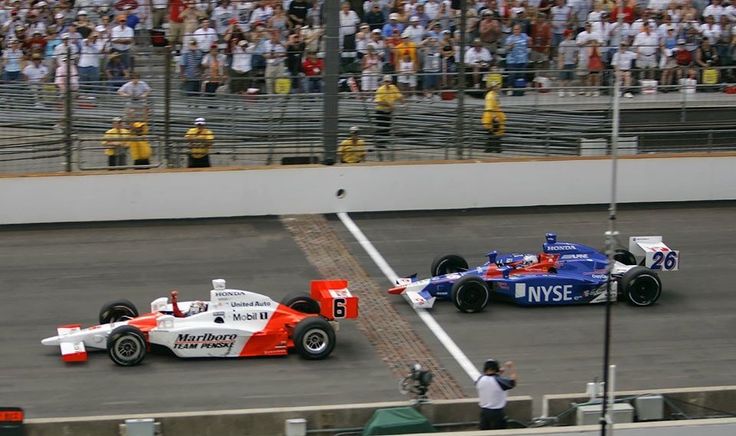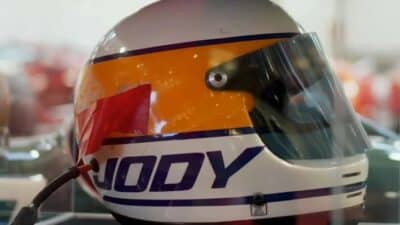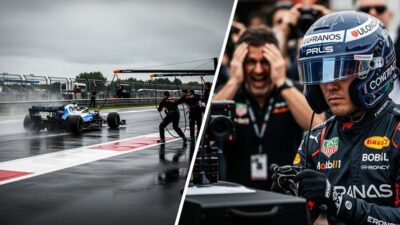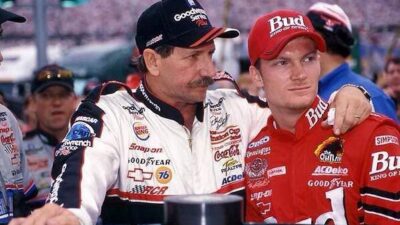Racing has produced some of the most heart-stopping moments in sports history, with victories decided by mere thousandths of a second. These ultra-close finishes showcase the incredible skill of drivers and the precision of modern timing technology that can separate winners from runners-up by margins smaller than a blink of an eye.
The closest finish in motorsport history belongs to the Indy Pro Series Chicago 100 at Chicagoland Speedway, where Alex Lloyd defeated Logan Gomez by just 0.0005 seconds in a margin so tight that Guinness World Records recognizes it as the smallest in any car race. This remarkable finish demonstrates how modern racing has evolved to create incredibly competitive scenarios where entire races can be decided by millimeters at the finish line.
From NASCAR’s spectacular three-wide battles to Formula 1’s legendary duels between racing icons, motorsport’s closest finishes represent the pinnacle of competitive racing. These moments capture everything fans love about motorsport: the drama, the skill, and the split-second decisions that separate champions from also-rans.
Key Takeaways
- The closest motorsport finish ever recorded was 0.0005 seconds in an IndyCar feeder series race
- NASCAR, Formula 1, and IndyCar have all produced finishes decided by less than 0.01 seconds
- Modern timing technology allows officials to measure victory margins down to thousandths of a second
Defining Close Finishes in Motorsport
Close finishes in motorsport are measured in thousandths of seconds, with margins under 0.1 seconds typically requiring photo finish technology. The closest recorded finish holds a Guinness World Record at just 0.0005 seconds.
What Constitutes a Photo Finish
A photo finish occurs when drivers cross the finish line so close together that officials cannot determine the winner with the naked eye. Modern motorsport considers any margin under 0.1 seconds a potential photo finish scenario.
Most racing series automatically trigger photo finish procedures when timing systems show gaps of 0.05 seconds or less. Officials then examine high-speed cameras positioned at the finish line to determine the exact order.
The closest finish in motorsport history measured just 0.0005 seconds at Chicagoland Speedway in an Indy Pro Series race. This margin earned recognition from Guinness World Records as the closest car racing finish ever recorded.
Visual confirmation becomes impossible at such small margins. Human reaction time averages 0.25 seconds, making gaps under 0.01 seconds completely undetectable to race officials without technology.
Technological Advances and Timing
Electronic timing systems revolutionized how motorsport measures close finishes. Modern systems use transponders and laser technology to record lap times accurate to 0.001 seconds.
Early racing relied on stopwatches and human timekeepers. This method created uncertainty in close finishes and led to disputed results. The introduction of electronic timing in the 1960s changed everything.
Today’s timing systems use multiple detection points. Cars carry transponders that communicate with track sensors at precisely measured locations. Backup systems include high-speed cameras running at thousands of frames per second.
Some series employ additional technology for ultra-close finishes. These include laser timing systems that measure when each car’s nose crosses the finish line plane.
Measuring the Closest Finish Margins
Racing series measure finish margins differently based on their specific timing technology and rules. Most professional series record times to three decimal places, creating margins measured in thousandths of seconds.
Common margin measurements:
- 0.001-0.005 seconds: Extremely close, often invisible to spectators
- 0.006-0.050 seconds: Very close, may require photo finish review
- 0.051-0.100 seconds: Close finish, usually visible to trained eyes
The 2024 NASCAR race at Atlanta produced a 0.003-second margin between first and second place. This represented NASCAR’s third-closest finish in Cup Series history.
Different racing disciplines face unique challenges in measuring close finishes. Oval track racing often produces the closest margins due to drafting effects and pack racing dynamics.
Legendary Photo Finishes in NASCAR History
NASCAR’s closest finishes showcase the sport’s most thrilling moments, with margins measured in thousandths of a second. The 2024 season delivered historic three-wide battles at Atlanta, while superspeedways like Daytona and Talladega continue producing legendary side-by-side duels.
Famous NASCAR Cup Series Finishes
The closest finishes in NASCAR Cup Series history began receiving precise measurements in 1993 when electronic timing systems replaced manual scoring. Kyle Larson’s 0.001-second victory over Chris Buescher at Kansas in 2024 set the new record for the tightest margin ever recorded.
Ricky Craven’s dramatic 0.002-second victory over Kurt Busch at Darlington in 2003 held the record for over 21 years. The two drivers collided coming off turn 4, banging doors in a deadlock to the checkered flag.
Top 5 Closest NASCAR Cup Series Finishes:
| Rank | Year | Race | Winner | Margin |
|---|---|---|---|---|
| 1 | 2024 | Kansas | Kyle Larson | 0.001 |
| T-2 | 2003 | Darlington | Ricky Craven | 0.002 |
| T-2 | 2011 | Talladega | Jimmie Johnson | 0.002 |
| 4 | 2024 | Atlanta | Daniel Suarez | 0.003 |
| T-5 | 1993 | Talladega | Dale Earnhardt | 0.005 |
The 2024 Ambetter Health 400 at Atlanta
The 2024 Ambetter Health 400 created NASCAR’s closest three-wide finish in Cup Series history. Daniel Suarez, Ryan Blaney, and Kyle Busch raced side-by-side through the final corner at Atlanta Motor Speedway.
Kyle Busch and Daniel Suarez made their moves to the outside of Ryan Blaney entering turn 3 on the final lap. The three drivers remained locked together through the trioval, creating one of the most spectacular finishes ever witnessed.
Suarez captured his second career Cup Series victory by just 0.003 seconds over Blaney. Kyle Busch finished third, trailing by only 0.007 seconds in the thrilling three-wide battle.
The finish required advanced photo technology to determine the winner. NASCAR officials used high-speed cameras and electronic timing to separate the incredibly close margin between all three competitors.
Dramatic Battles at Talladega and Daytona
Superspeedway racing produces NASCAR’s most frequent photo finishes due to pack racing and drafting. The Aaron’s 499 at Talladega delivered multiple historic moments, including Jimmie Johnson’s 0.002-second victory over Clint Bowyer in 2011.
Johnson received a crucial push from Dale Earnhardt Jr. heading into the trioval. He cut to the inside of Clint Bowyer, Kevin Harvick, Jeff Gordon, and Mark Martin in a five-wide battle for the victory.
Daytona International Speedway created equally dramatic moments throughout NASCAR history. The inaugural Daytona 500 in 1959 required three days of photo review to determine Lee Petty had defeated Johnny Beauchamp.
Ryan Blaney scored back-to-back Talladega victories in 2019 and 2020, both by identical 0.007-second margins. His 2019 triumph came after a final-lap pass of Ryan Newman, while his 2020 victory required fending off multiple challengers through the trioval.
The tandem drafting era produced some of the closest finishes ever recorded. Two-car partnerships created incredible speed but often resulted in photo finishes decided by thousandths of a second.
Unforgettable IndyCar and Indianapolis 500 Moments
IndyCar racing has delivered some of motorsport’s most dramatic finishes, with margins measured in thousandths of seconds that keep fans on the edge of their seats. The sport’s crown jewel at Indianapolis and thrilling battles at venues like Chicagoland have created legendary moments that define what makes open-wheel racing extraordinary.
Closest IndyCar Finishes at Chicagoland
Chicagoland Speedway became synonymous with nail-biting IndyCar finishes during its years hosting the series. The track’s wide racing surface and multiple grooves created perfect conditions for side-by-side battles to the checkered flag.
The Delphi Indy 300 at Chicagoland produced several photo finishes that had officials scrambling to determine winners. These races showcased IndyCar’s competitive balance, with leads changing hands multiple times in the final laps.
Key characteristics of Chicagoland’s close finishes:
- Multiple racing lanes allowed for dramatic last-lap passes
- High speeds created slipstream battles
- Wide track surface kept cars side-by-side for extended periods
The venue’s 1.5-mile oval configuration proved ideal for pack racing. Drivers could draft behind competitors and make moves in the closing stages that often decided races by mere hundredths of seconds.
Indianapolis 500: Edge-of-Your-Seat Endings
The Indianapolis 500 has produced some of motorsport’s most memorable close finishes, with several battles decided by less than a tenth of a second. These moments have become part of racing folklore.
Al Unser Jr. delivered the closest finish in race history in 1992, defeating Scott Goodyear by just 0.043 seconds. This margin remains the benchmark for Indianapolis 500 drama.
Sam Hornish Jr. made history in 2006 with the first last-lap pass for victory in race history. He overtook Marco Andretti with just meters to go, winning by 0.0635 seconds in a finish that left 300,000 spectators breathless.
Hélio Castroneves experienced both sides of these dramatic endings. He lost the 2014 race to Ryan Hunter-Reay by 0.06 seconds in another photo finish that required multiple camera angles to determine the winner.
The Indianapolis 500’s unique characteristics create these moments:
- 2.5-mile track allows for strategic fuel saving
- Pack racing keeps multiple cars in contention
- Aerodynamic drafting enables last-lap passes
Impact of Photo Finishes on IndyCar Legacy
These razor-thin margins have elevated IndyCar’s reputation as the most competitive form of open-wheel racing. Photo finishes demonstrate the series’ parity and technical excellence.
Modern timing technology now measures finishes to the thousandth of a second. This precision has resolved disputes but hasn’t diminished the excitement of these battles.
Television replay systems have become crucial for determining winners. Multiple camera angles and high-speed photography capture moments that human eyes cannot definitively judge in real time.
The frequency of close finishes in IndyCar sets it apart from other racing series. Nearly 15% of Indianapolis 500 races since 1990 have been decided by less than one second, creating a legacy of unpredictability.
These moments generate lasting media coverage and fan engagement. Races decided by thousandths of seconds become instant classics, replayed for decades and attracting new audiences to the sport.
Formula 1’s Tightest Battles to the Line
Formula 1 has produced some of motorsport’s most thrilling photo finishes, with the 1971 Italian Grand Prix holding the record as the closest finish in F1 history at just 0.01 seconds. Several other races have delivered similarly nail-biting conclusions that left fans breathless.
The 1971 Italian Grand Prix at Monza
The 1971 Italian Grand Prix at Monza stands as Formula 1’s closest finish ever recorded. Peter Gethin emerged from the final Parabolica corner in his BRM with Ronnie Peterson’s March alongside him.
The two drivers drag-raced to the finish line in a spectacular conclusion. Gethin held on by the smallest margin possible – 0.01 seconds – to claim his only F1 victory.
Four drivers finished within two-tenths of each other. Francois Cevert took third in his Tyrrell, followed by Mike Hailwood in the Surtees.
This race also set another record that lasted decades. The average speed reached 242.615 km/h, making it F1’s fastest ever grand prix for 32 years until 2003.
Other Record-Setting F1 Finishes
Several other F1 races have produced incredibly tight finishes that remain legendary today. The 2002 United States Grand Prix saw Rubens Barrichello edge Michael Schumacher by just 0.011 seconds.
The 1986 Spanish Grand Prix delivered drama when Ayrton Senna held off Nigel Mansell by 0.014 seconds. Mansell pulled alongside Senna on the main straight but couldn’t complete the pass.
Monza has historically produced the most exciting finishes. The 1969 Italian Grand Prix featured four drivers finishing within 0.19 seconds of winner Jackie Stewart.
Top 5 Closest F1 Finishes:
- 1971 Italian GP: 0.01s
- 2002 US GP: 0.011s
- 1986 Spanish GP: 0.014s
- 1982 Austrian GP: 0.05s
- 1969 Italian GP: 0.08s
Historic Finishes in Other Motorsport Series
Beyond Formula 1 and NASCAR, motorcycle racing and open-wheel series have produced some of the tightest margins in racing history. The World Rally Championship has also delivered dramatic photo finishes that required precise timing equipment to determine winners.
MotoGP’s Closest Victories
MotoGP regularly produces the closest finishes across all major motorsport series. The nature of motorcycle racing allows riders to draft closely and make last-second passes at the finish line.
Several MotoGP races have been decided by margins under 0.010 seconds. These ultra-close finishes happen when riders cross the line wheel-to-wheel at speeds over 200 mph.
The electronic timing systems in MotoGP can measure differences down to 0.001 seconds. This precision has revealed just how tight these motorcycle battles can be.
Key MotoGP close finish characteristics:
- Multiple riders often finish within 0.1 seconds
- Slipstreaming plays a major role in final outcomes
- Photo finish technology is essential for determining winners
The closest documented MotoGP finish occurred with a margin of just 0.006 seconds. Both riders crossed the line simultaneously, making it nearly impossible to determine the winner without electronic timing.
Indy Lights and Junior Series Records
Indy Lights has produced some of the closest finishes in open-wheel racing. The spec chassis and engines create extremely competitive racing where small margins decide races.
Alex Lloyd holds one of the notable close finish records in Indy Lights competition. His victory came after a side-by-side battle to the checkered flag.
Logan Gomez also competed in several photo finishes during his Indy Lights career. These junior series often see closer racing than their premier counterparts due to more equal equipment.
Indy Lights finish characteristics:
- Spec equipment creates tight competition
- Oval races typically produce the closest margins
- Young drivers take more risks for victories
The development nature of these series means drivers push harder for wins. This aggressive racing style leads to more last-lap battles and extremely close finishes.
World Rally Championship’s Narrow Wins
The World Rally Championship has seen finishes decided by just 0.2 seconds according to motorsport timing records. This represents one of the closest margins in rally competition history.
Rally events span multiple days and hundreds of miles. Having such small gaps after extensive competition demonstrates incredible consistency between top drivers.
The WRC’s closest finishes typically occur on the final stage. Drivers know their time gaps and push to the absolute limit on the last few miles.
WRC close finish factors:
- Multi-day events compress time gaps
- Final stage drama creates last-minute lead changes
- Precise timing equipment measures tiny differences
These narrow victories showcase how evenly matched modern rally drivers have become. The technical precision required to maintain such small gaps over long distances makes WRC’s closest finishes particularly impressive.
The Impact and Legacy of Iconic Finishes
Close finishes create defining moments that transcend individual races, becoming touchstones for entire careers and racing series. The Carolina Dodge Dealers 400 at Darlington in 2003 transformed Ricky Craven from a journeyman driver into a racing legend through one spectacular 0.0026-second victory.
How Close Finishes Shape Motorsport History
Photo finishes become instant classics that define eras of motorsport. The 2003 Darlington race stands as NASCAR’s most celebrated finish not just for its margin, but for its drama.
Craven and Kurt Busch battled on worn tires across a track notorious for punishing rubber. Both cars slid sideways down the backstretch at nearly 180 mph.
The final turn saw both drivers scraping the wall before bouncing off each other at the finish line. This single moment captured everything fans love about stock car racing: skill, courage, and raw determination.
Television replays of that finish aired thousands of times across decades. It became NASCAR’s signature moment for highlighting the sport’s intensity to new audiences.
The race elevated Darlington’s status as the “Track Too Tough to Tame.” It proved that old-school racing on challenging tracks could produce moments that modern superspeedways couldn’t match.
Drivers and Teams Cemented by the Smallest Margins
Ricky Craven’s career transformed completely after his Darlington triumph. Before that race, he was considered a solid but unremarkable driver struggling with declining performance.
The victory came during Craven’s final competitive NASCAR season. Without that 0.0026-second margin, his career would have ended quietly without memorable highlights.
Career Impact for Craven:
- Secured his place in NASCAR highlight reels permanently
- Earned respect as a clutch performer under pressure
- Created his defining career moment when it mattered most
Kurt Busch gained recognition for his role in the epic battle despite losing. The finish demonstrated his ability to race clean while competing for wins on the sport’s most difficult tracks.
Team owners and sponsors noticed both drivers differently after Darlington. Close finishes prove a driver’s ability to perform when stakes are highest, making them more valuable in negotiations.
Frequently Asked Questions
The closest finishes in motorsport involve margins measured in thousandths of seconds. These razor-thin victories showcase the precision of modern timing systems and the incredible skill of drivers competing at the highest levels.
What was the closest finish in Formula 1 history?
The 1971 Italian Grand Prix at Monza produced one of the closest finishes in Formula 1 history. This race featured 25 lead changes and an average speed of 150 mph.
Another incredibly close finish occurred at the 1986 Spanish Grand Prix at Jerez, where Ayrton Senna beat Nigel Mansell by just 0.014 seconds. This margin remains one of the smallest winning gaps in F1 history.
The combination of slipstreaming and strategic positioning often creates these dramatic moments. Drivers must time their final moves perfectly to gain even the smallest advantage.
Which NASCAR race holds the record for the tightest finish?
Kyle Larson’s victory over Chris Buescher at the 2024 AdventHealth 400 at Kansas Speedway holds the record for the closest NASCAR Cup Series finish at 0.001 seconds. The electronic timing system initially declared Buescher the winner before further review confirmed Larson’s victory.
The two drivers banged doors side-by-side coming off the final corner. This finish broke a record that had stood since 2003.
What is considered the narrowest victory margin in overall racing history?
Tyler Reddick achieved the closest finish in recorded motorsports history in the NASCAR Xfinity Series. This victory margin was even smaller than the Cup Series record.
The margin was so small that it pushed the limits of electronic timing systems. Such finishes demonstrate how competitive modern motorsport has become.
When did the closest finish in the NASCAR Xfinity Series occur?
The NASCAR Xfinity Series produced what is considered the closest finish in recorded motorsports history with Tyler Reddick’s victory. This second-tier NASCAR series finish set the overall standard for narrow margins.
The Xfinity Series often features closer racing than the Cup Series. Younger drivers and similar equipment create more competitive finishes.
How is a photo finish determined in motorsport, and which was the closest?
Modern motorsport uses electronic timing systems that measure intervals to thousandths of a second. NASCAR implemented this electronic scoring system in May 1993, replacing the old photo review methods.
Before electronic timing, officials used actual photographs to determine winners. The 1959 Daytona 500 required three days of photo review to declare Lee Petty the winner over Johnny Beauchamp.
Some finishes are so close that photo review is still needed alongside electronic data. The combination provides the most accurate results possible.
Which Daytona 500 year featured the most nail-biting finish?
The 1959 Daytona 500 featured the most famous photo finish in the race’s history. Lee Petty was declared the winner over Johnny Beauchamp after three days of photo review.
Daytona International Speedway has hosted seven of the 15 closest finishes in NASCAR Cup Series history. The track’s superspeedway configuration creates ideal conditions for close racing.
The 2007 Daytona 500 was the first to be decided by a photo finish since 1959. Modern electronic timing made the decision much faster than the original race.











